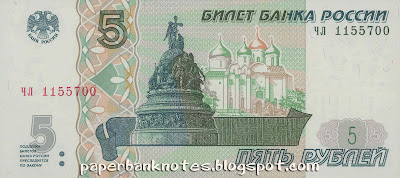Tuaisceart Éireann
(Northern Ireland)
Northern Bank Limited (est.1824)
(now Danske Bank Limited)
Currency : Pound Sterling (GBP)
Currency : Pound Sterling (GBP)
This is a Northern Bank Ltd bank's training specimen note issued for the purpose of assisting training the bank's tellers/staff. This note is similar to those full sets of bank's teller training banknotes issued by Note Printing Australia (NPA).
Now, coming back to this training specimen one pound note, this is a genuine note printed by Bradbury Wilkinson & Co Ltd, New Malden, Surrey, England. Bradbury Wilkinson & Co Ltd was established and began printing banknotes in 1856. The company was then bought over by De La Rue in 1990. It was reported that a total of 45,000 pieces were issued/printed for training purposes and all are printed with the following text on the front and on the back in red: -
Front - SPECIMEN --- TRAINING PURPOSES ONLY ---
NOT NEGOTIABLE
Back - THIS IS A SPECIMEN OF NORTHERN BANK LTD.
CURRENCY NOTE
IT HAS NO VALUE AND MUST NOT BE NEGOTIATED
Whilst this one pound training specimen note has no face value as printed, it is now a collectible item especially to a banknotes collector, and as such it is worth much more than the value of one pound.
This note is printed with the date of 01.07.1970, which is also the date that Northern Bank took over the Belfast Banking Company. At the time of the takeover, the Northern Bank was owned by the Midland Bank Group. Northern Bank was acquired by the Midland Bank Group in 1965. In 1988, the National Australia Bank Ltd acquired the Northern Bank (together with Clydesdale Bank and Northern Bank (Ireland) Limited). In 2004, the Northern Bank was then sold to Danske Bank, and now trades under their brand name in Northern Ireland.
This is the first series of banknotes issued following the takeover by the Midland Bank group. All banknotes are signed by the Managing Director, but without their title printed on the notes. All the 1970 one pound notes, for both the normal circulating and training notes are all printed with the prefix C. As for the circulating note, a total of 4.0 million pieces were issued, with the two varieties of thin and thick signatures. This series of notes, from ₤1 to ₤100 went on for circulation in Northern Ireland for 18 years.
 |
| Three main industries of Northern Ireland |
Front - The obverse depicts the three main industries of Northern Ireland, from L-R - agriculture, shipbuilding and linen manufacture.
Managing Director (not printed) - William Sydney Wilson
Watermarks - Griffin & Guineas' motif
Dimensions - 135.5mm x 67mmBack - The reverse features the Midland Bank's 'Griffin & Guineas' motif in the middle, with the face value printed on both sides. It would be fair to say that there is nothing special about the design on the back. In fact, it looks fairly simple with limited security features too.
 |
| Midland Bank's 'Griffin & Guineas' motif |











